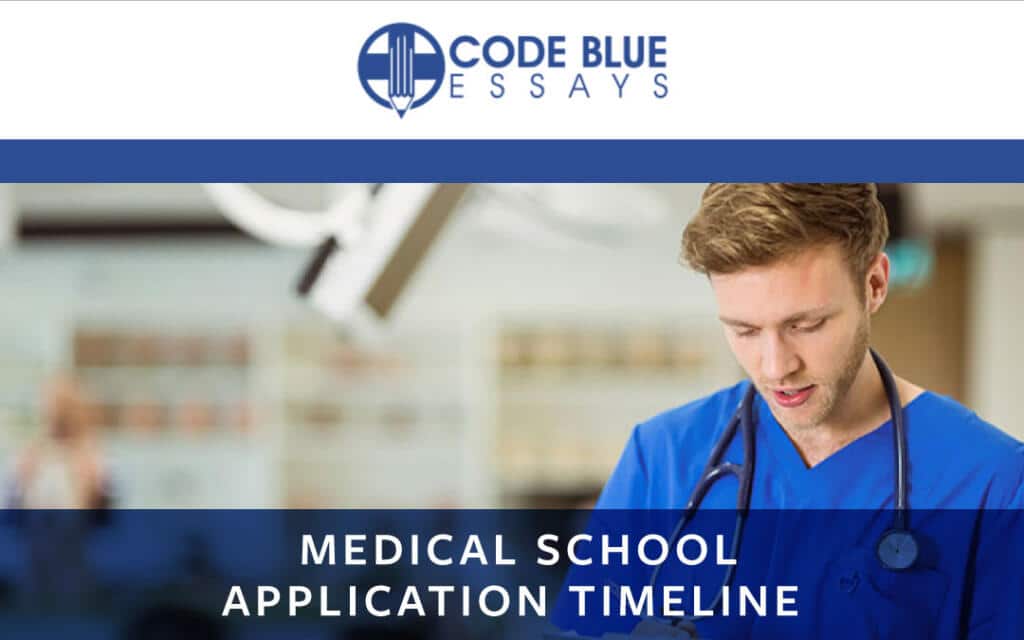Medical School Application Timeline
1 Comments

June 30, 2021 in Admissions, Medical School, Medical School Tips, Study skills
Every year, students across the country gain acceptance into medical school, fulfilling a dream that’s been in the works for years. Maybe you’ve been working toward that same dream but wonder – okay, but how do I actually apply, and succeed at doing so? And when? Read on to see a detailed timeline of what to do and when to do it so you can put yourself in the very best position to get into your dream medical school.
Phase Zero: Before Applications (prior to May application year)
If you’re serious about wanting to go to medical school, you’ve probably begun to take the steps necessary to build a transcript and CV worthy of medical school admission. You’ve been taking (and acing!) the classes, doing the research, shadowing, and more. Maybe you already have that goal MCAT score you’ve been working toward. These steps are an integral part of your application, and you should be collecting these accolades throughout your undergraduate career. What else should you be doing? As you prepare to begin your applications, you should spend some time drafting descriptions for your extracurriculars. Words matter and you want to communicate effectively that you’ve been spending your time outside of the classroom in activities valuable to your future.
In addition to the long term work you’ve put in, the four major items to check off your list immediately leading into application “season” are: getting a viable MCAT score on file, writing a personal statement, obtaining a copy of your transcript for your application, and seeking three or more letters of recommendation (from professors, advisors, physicians, etc.) The letters of recommendation are not “due” until later in the process, but you want to give your letter writers plenty of lead time to be able to write a quality letter.
Phase One: Primary Applications (May – June of application year)
Depending on whether you’re applying to an allopathic (seeking an MD, through AMCAS) or osteopathic (seeking a DO, through AACOMAS) medical school, you will start the next step at different times. AMCAS applications open in early June, and AACOMAS in early May. Your primary application is where you put all of your preparation to work, and that preparation is important! Medical schools admit candidates on a rolling basis – that means that early applicants get an advantage, as spots fill as time goes by. Having an excellent personal statement and a great CV prepared and ready to go removes any delay in your application process. The last thing you want is to be struggling through writing a personal statement while others are getting ahead with prepared personal statements ready to submit as soon as the application opens.
Phase Two: Secondary Applications (July – September of application year)
After you submit your primary applications, medical schools start sending secondary applications. Some will review your information and send you a secondary application if you qualify for consideration. Others automatically send them, so be certain that your MCAT scores and GPA particularly qualify you for admission at the schools you’re applying to before you invest the time in a secondary application. There will be a period of time between submitting your primary application and receiving a secondary application, and it may seem like it’s time to take a break from the application process… but it’s not! Secondary applications ask you to answer specific essay questions so you should be drafting and perfecting your answers to commonly asked essay questions while you wait for your secondary applications to arrive. Why the rush? Secondary applications are not “due” until late in the year – it could be November, December, or even January. However, medical schools expect you to submit your secondaries as soon as possible after receiving them – most look for them within two weeks. Because of this, having your essay responses ready before you get the applications in hand can save you time and stress when the questions hit your inbox. In addition to prepping for topics like the diversity question or the challenge question, you can find a particular school’s exact secondary essay questions (or past questions) here. Code Blue Essays is experienced in fine-tuning not only your personal statement for your primary application, but getting your secondary essays up to par in a timely fashion. Reach out during this process! We’re here to help.
Phase Three: Interviews (Around September – March preceding admission year)
After you submit your completed secondary essays, medical schools may reach out immediately for an interview… or it could be a waiting game. Interviews are conducted throughout the fall into the winter and even early spring at some schools. As with anything you’ve done throughout your quest to attend medical school, the interview takes thoughtful preparation and planning, and Code Blue can help! You’ll need to not only be prepared for specific questions you expect to come your way, but you’ll need to dress the part and get yourself to the interviews. That means hotels, flights, and cars among other logistics. Finally, remember to send a Thank You letter to the schools that interview you – send them to those who were especially involved in your interview day to express your appreciation and continued interest.
Phase Four: Acceptance!
After an interview, it typically takes two to three weeks for medical schools to make a decision.
The application process for medical school can be really difficult to work through alone. At Code Blue Essays, we take part in your application process with a hands-on approach. Your essays are polished by those who have been in your position before. Let us help guide you through this long and rigorous process, and contact us today!